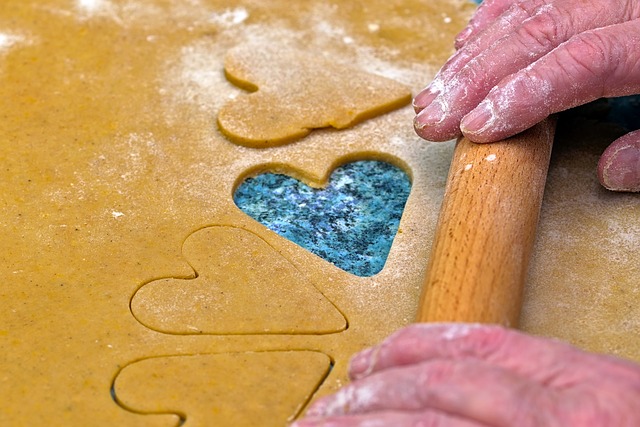Contrast therapy, using hot and cold treatments, is a popular and effective method for athletes to enhance performance and accelerate recovery. By alternating temperatures, this approach stimulates blood flow, reduces inflammation, and promotes faster healing and flexibility. For sports injuries, contrast water therapy is a game-changer, aiding in waste removal, reducing swelling and pain, and enabling quicker return to training. This simple yet powerful technique involves bathing in warm followed by cold water, offering numerous benefits for muscle recovery and optimal athletic performance.
“Enhance your athletic performance and expedite recovery with the transformative power of contrast therapy. This article guides athletes through the science-backed benefits of hot and cold therapy for optimal recovery. From understanding the potential of contrast therapy to mastering practical applications like contrast water therapy, we offer a step-by-step approach. Discover how alternating heat and cold can revolutionize muscle recovery post-workout or sports injuries, ensuring you return stronger and faster.”
Understanding Contrast Therapy: Unlocking Its Potential for Athletes
Contrast therapy has emerged as a powerful tool for athletes looking to enhance their performance and speed up recovery. This therapeutic approach involves alternating between hot and cold treatments, which can significantly benefit muscular systems. By immersing oneself in contrasting temperatures, such as a hot contrast bath followed by a cold one, athletes can stimulate blood flow and promote faster healing. The benefits of contrast therapy for sports recovery are manifold; it reduces muscle soreness, diminishes inflammation, and enhances flexibility, all crucial factors for an athlete’s well-being.
For athletes recovering from injuries, incorporating contrast water therapy into their routine can be a game-changer. Alternating heat and cold helps in the removal of metabolic waste products from muscles, reducing swelling and pain. Moreover, it improves circulation, ensuring oxygen and nutrients are delivered efficiently to sore or damaged tissues. As a result, contrast therapy becomes an effective recovery method for sports injuries, enabling athletes to return to their training regimens sooner.
The Science Behind It: Benefits of Hot and Cold Therapy for Recovery
The Science Behind It: Benefits of Hot and Cold Therapy for Recovery
Contrast therapy, involving alternating between hot and cold treatments, has gained popularity among athletes looking to enhance their recovery process. Scientifically, this method leverages the body’s natural response to temperature changes to stimulate various physiological processes that aid in muscle repair and rejuvenation. When muscles are exposed to heat, blood vessels dilate, increasing oxygen and nutrient delivery to tissues, which helps reduce inflammation and promotes healing. Conversely, cold therapy causes vasoconstriction, minimizing blood flow to the affected area, reducing swelling, and numbing pain signals, thereby providing a soothing effect on sore or injured muscles.
For athletes, combining hot and cold therapy offers numerous advantages. It can accelerate post-workout recovery by breaking down metabolic waste products that accumulate during intense exercise, while also encouraging the removal of lactic acid. Furthermore, contrast baths or showers have been shown to boost circulation, enhance flexibility, and reduce muscle stiffness, making it an effective strategy for managing sports injuries and optimizing athletic performance.
Practical Application: A Step-by-Step Guide to Contrast Water Therapy
Practical Application: A Step-by-Step Guide to Contrast Water Therapy
Contrast water therapy involves alternating between hot and cold water, offering a powerful tool for athletes looking to enhance recovery after intense training or sports injuries. To begin, fill a large tub or container with warm water, ensuring the temperature is comfortable but not too hot—around 37-40°C (98-104°F). Next, rapidly switch to cold water, ideally around 15-20°C (59-68°F), for a set duration, typically between 1-3 minutes. This cycle is repeated several times, with rest periods in between to allow the body to adjust and recover.
After your contrast bath, it’s crucial to properly dry off and warm up afterward. This can include light stretching, gentle exercise, or simply wrapping yourself in a cozy towel. The key benefits of this method lie in its ability to stimulate blood flow, reduce inflammation, and alleviate muscle soreness. For athletes, contrast therapy for sports recovery is an effective way to expedite healing and prepare for the next training session.
Effective Strategies: Maximizing Muscle Recovery with Alternating Heat and Cold
Maximizing Muscle Recovery with Alternating Heat and Cold is a powerful strategy within the realm of contrast therapy for athletes. This effective approach involves alternating between hot and cold treatments, which has been shown to significantly enhance sports recovery methods. By immersing oneself in contrast water therapy, athletes can benefit from improved circulation, reduced muscle soreness, and quicker healing after intense training sessions or sports injuries.
Hot and cold therapy is a dynamic duo when it comes to contrast baths for athletes. Heat increases blood flow, relaxing muscles and promoting the removal of metabolic waste. Conversely, cold constricts blood vessels, reducing inflammation and numbing pain signals. Alternating between these extremes can be a game-changer in the recovery process, ensuring folks looking to revolutionize their post-workout routines have a simple yet powerful tool at their disposal.
Contrast therapy, through its combination of hot and cold exposure, offers a powerful tool for athletes to enhance recovery and performance. By understanding the science behind this method and following practical application guides, such as step-by-step contrast water therapy sessions, individuals can maximize the benefits. Alternating heat and cold stimulates blood flow, reduces inflammation, and promotes muscle repair, making it an effective strategy for sports recovery. Incorporating contrast baths into post-workout routines can be a game-changer for athletes looking to unlock their full potential while mitigating injury risks.
